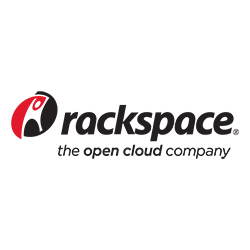 By Sue Poremba
By Sue Poremba
Sue Poremba is a freelance writer focusing primarily on security and technology issues and occasionally blogs for Rackspace Hosting.
Virtualization has been a boon to enterprise, as it makes IT operations more efficient. Some like its green qualities as virtualization saves on energy consumption, while others appreciate the storage capacity, as well as the data recovery solutions for if disaster strikes.
However, the virtual environment is invisible, and with that come more challenges in making sure it runs smoothly. The cloud might be simple to setup, but it becomes more complex over time. In addition, the more machines and data involved, the more difficult it can be to monitor for space, CPU spikes, network security and other indicators.
“If there is a bug or a discrepancy, I need to know that there’s a problem before my customer does. And though that is the biggest challenge, it’s also a great opportunity,” Russ Caldwell, CTO, Emcien Corporation said.
One of those challenges is making sure storage in the virtualized environment is adequate. “We focus on storage and database environments that scale as the customers grow,” said Caldwell. “Determining how fast customers grow and change is the biggest factor for determining the adequate storage size.”
Companies looking at virtualization solutions need storage solutions that are flexible so they can add or remove storage, as needed. Even though it may have been the right size in the beginning of a project, things change, and a flexible virtualization tool can give that peace of mind when things change. For example, when we’re working with slow-moving manufacturing data, we can determine the adequate storage size easier than when we’re working with hundreds of millions of bank nodes, where the growth is much more dramatic.
The key, according to John Ross with virtual solution company Phantom Business Development at Net Optics, is to truly assess the performance of the servers and the requirements of the virtual machines. This requires monitoring to be in place for the life of the systems to predict utilization and to modify placement based on performance. “When this is not accounted for, it can appear as though there is high CPU utilization on the hosts as well as the VMs,” said Ross, “With the use of protocols such as NFS and ISCSI, it can put quite a load on the network.”
Companies moving to the cloud also have to change how they think about networking. “It can be hard to understand how network connection works when there aren’t wires to simply plug it into a box, but instead virtual, invisible connections that need to be managed through APIs or online interfaces,” said Caldwell. One of the challenges for a company with multiple clients is keeping client data separate from one another. Grouping machines together and isolating them in their own network is the best approach in tackling this challenge. Using excellent monitoring tools smartly can ensure that the network is as reliable as possible.
“Network connectivity comes down to whether the network connection is a single point of failure: If your virtualization solution is off-site, it’s only as good as the quality of the Internet connection between you and your provider,” said William L. Horvath with DoX Systems. If you have a single connection between you and the Internet, that’s one problem. (You can reduce the risks by contracting with two or more ISPs and getting routers that support trunking.) Likewise, if your virtualization provider’s facility is in a single geographical location (say, Manhatten) that loses functionality for an extended period of time due to some natural disaster, you’re hosed. Our Chamber of Commerce lost access to a cloud-based service not too long ago because someone in the data center, which wasn’t owned by the service provider, forgot to disable the fire suppression system during emergency testing, which unexpectedly destroyed most of the hard drives in the servers.
To avoid the challenges involved in virtualization, Ross provided the following tips:
1. Plan on virtualizing everything — not just the servers but the network, the storage, the security … everything!
2. Standardize everything, from the operating systems on upwards through middleware and applications. The more uniformity exists within configurations, the easier it will be to scale and move these workloads optimally around the environment.
3. Ensure network capabilities are met. This will dynamically change and collapse. There will be huge flow changes as utilization and cloud are adopted.
4. Implement resource monitoring. Existing legacy tools will not provide the data or detail needed.
5. Implement a decommissioning process. Ross repeatedly finds several unused machines running. In a virtual environment, this can become a major issue, consuming resources and driving up costs.
6. Plan for backup and disaster recovery. This will drastically change in virtualization and must be addressed.
7. Train your team based on what the management will look like, not on the migration.
The cloud solves certain problems really well and it allows for SMBs to have the flexible infrastructures that they require — without a lot of capital or hardware or payroll costs. Using the cloud wisely with the right tools, companies can get a leg ahead.



















